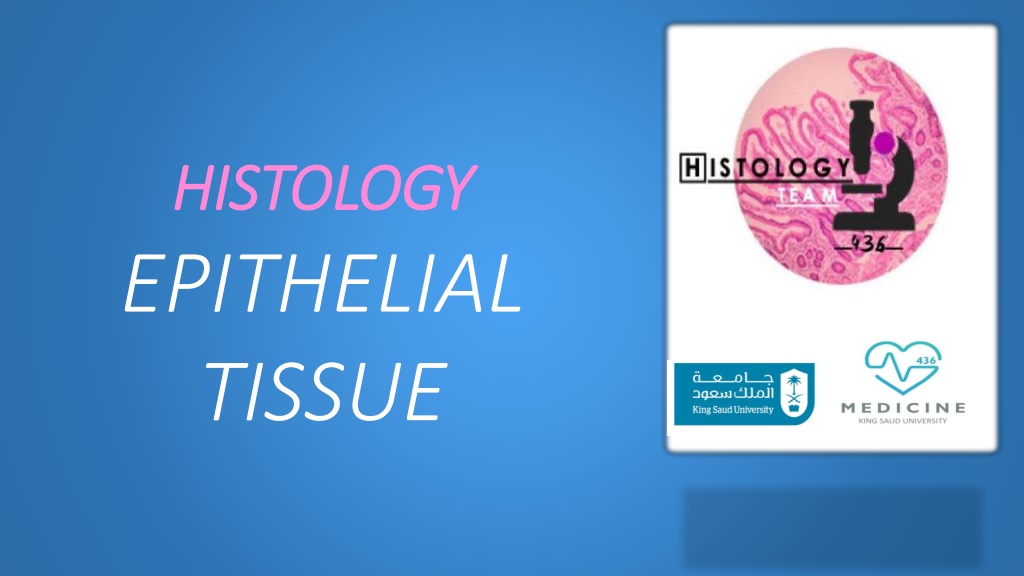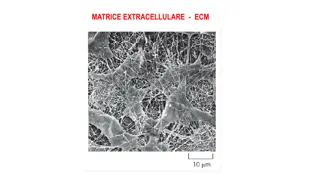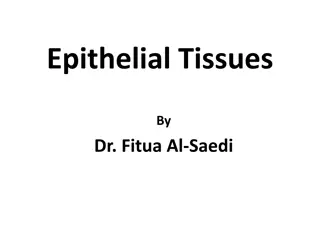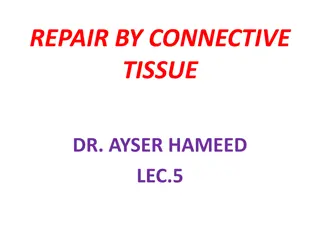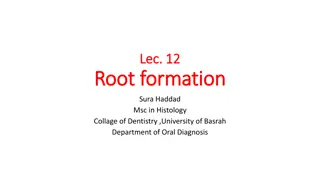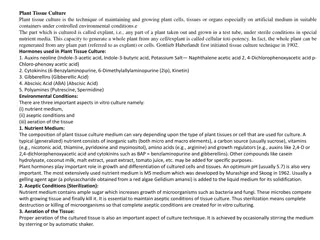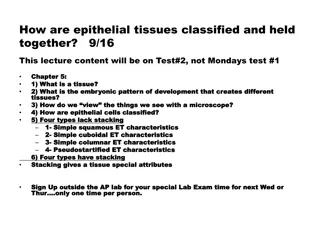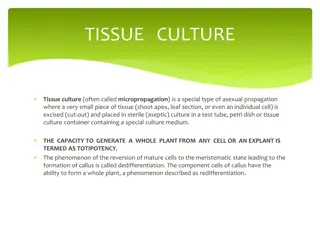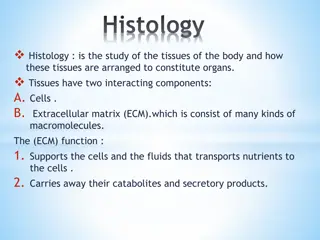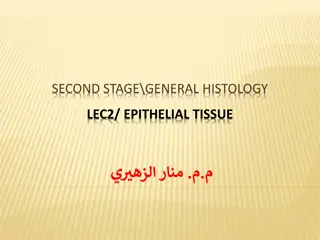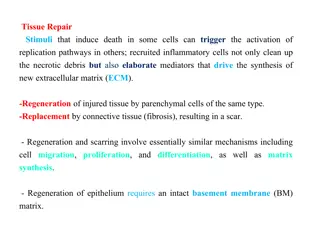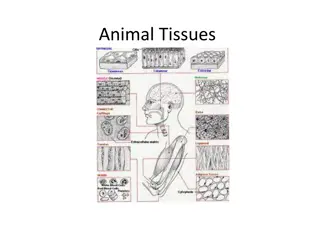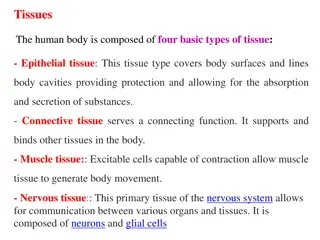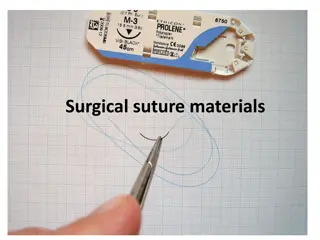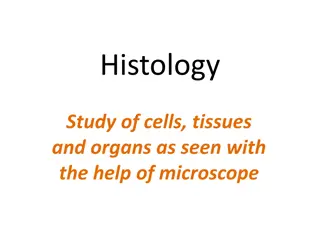Epithelial Tissue: Characteristics, Types, and Functions
Epithelial tissue is a crucial component of the body forming protective barriers, aiding in secretion, absorption, excretion, and more. Learn about its general characteristics, different types such as simple and stratified epithelium, glandular epithelium classification, and clinical applications like Kartagener's syndrome and metaplasia.
Download Presentation

Please find below an Image/Link to download the presentation.
The content on the website is provided AS IS for your information and personal use only. It may not be sold, licensed, or shared on other websites without obtaining consent from the author.If you encounter any issues during the download, it is possible that the publisher has removed the file from their server.
You are allowed to download the files provided on this website for personal or commercial use, subject to the condition that they are used lawfully. All files are the property of their respective owners.
The content on the website is provided AS IS for your information and personal use only. It may not be sold, licensed, or shared on other websites without obtaining consent from the author.
E N D
Presentation Transcript
HISTOLOGY HISTOLOGY EPITHELIAL TISSUE
Epithelial Tissue Epithelial Tissue Objectives: Describe the general characteristics of epithelial tissue. Discuss the microscopic structure and distribution of different types of epithelial membranes. Classify glandular epithelium according to different parameters. Mention the functions of epithelial tissue. Understand the following clinical applications: Immotile cilia syndrome (Kartagener s syndrome). Metaplasia.
EPITHELIAL TISSUE EPITHELIAL TISSUE FUNCTIONS OF EPITHELIUM : General characteristics: Cells are tightly joined with little intercellular space. The little might be replace with scarce or scanty . Rest on a basement membrane. visible in both Light microscopic (L/M) & Electron microscopic (E/M) . Avascular. ( A means: not ) High power of regeneration. Protection as in epidermis of skin. Secretion as in glands. Absorption as in small intestine. Excretion as in kidney. Reproduction as in gonads. Smooth lining as in blood vessels. Classification: a. Epithelial membranes: 1- Simple epithelium: one layer. 2- Stratified epithelium: more than one layer. b. Glands (Glandular Epithelium).
2- Simple cuboidal Simple Epithelium 3- Simple columnar 4- Pseudo-Stratified Columnar 1- Simple squamous / flat One layer of cells, they can be tall or short that don t reach the surface. They rest on a basement membrane. Cell layers: One layer Nuclei Flat, provides smooth thin surface. Basal, oval. Central, round appears at different levels Characteristics: 1- Endothelium (lining the CVS) 2- Alveoli of lung. 1- Thyroid follicles. Non-ciliated: 1- In lining of stomach 2- intestines (with goblet cells) 3- in gall bladder. Non-ciliated: 1- vas deferens Sites/ Distribution: Ciliated with cilia on free surface: 1- Fallopian tubes. Ciliated with Goblet Cells: 1- trachea 2-bronchi 3- resp.system
Stratified Epithelium 1-Stratified Squamous: 3-Transitional: 2- Stratified Columnar Epithelium: Basal cells: columnar with basal oval nuclei. Intermediate cells: polygonal with central rounded nuclei. Surface cells: flat with flat nuclei. Basal cells: columnar. Intermediate cells: polygonal. Surface cells: columnar. Basal cells: columnar. Intermediate cells: polygonal. Surface cells: large cuboidal with convex free surface, may be bi-nucleated. Cell layers and Nuclei Characteristics: Sites/ Keratinized (keratin layer on the surface): 1- epidermis of skin. Non-keratinized: 1- esophagus. 1- large ducts of glands. 1- Urinary bladder. Distribution:
GLANDS (Glandular Epithelium) Classifications: 50% of Epithelial Tissues are Glands Presence or absence of ducts Number of cells: Shape of secretory part: Mode of Mode of Secretion: Secretion: Nature of secretion: Serous: Serous: parotid gland. 1- Merocrine: No part of the cell is lost with the secretion. salivary glands Tubular: Intestinal gland. 1-Uni cellular: Goblet cells 1- Endocrine: Thyroid gland 2- multicellular: Salivary glands 2- Exocrine: Salivary gland Mucous: Mucous: goblet cells. Alveolar (acinar): Mammary gland 2- Apocrine: The top of the cell is lost with the secretion. mammary gland 3- Mixed: Pancreas Muco Muco- -serous serous: sublingual gland. Tubulo-Alveolar: Pancreas 3- Holocrine: The whole cell detaches with the secretion. sebaceous glands. Watery: Watery: sweat gland.
Clinical Applications Clinical Applications Immotile cilia syndrome (Kartegener s syndrome): Disorder that causes infertility in male and chronic respiratory tract infection in both sexes. It is caused by immobility of cilia and flagella induced by deficiency of dynein. Dynein protein is responsible for movements of cilia and flagella. Metaplasia: It is the transformation of one type of tissue to another in response to injury. This condition is usually reversible if the injury is removed. Example: pseudostratified ciliated columnar epithelium of the respiratory passages, e.g. trachea, of heavy smokers may undergo squamous metaplasia, transforming into stratified squamous epithelium.
Squamous Metaplasia Squamous Metaplasia
Videos for you to watch: Epithelium https://www.youtube.com/watch?v=L1YQaAfAKfs https://www.youtube.com/watch?v=rSqzvU6vmmg https://www.youtube.com/watch?v=3LceGFcMtqM
THANK YOU ! Histology team members : Rana Barasain Reema AlBarrak Shahad AL Anzan Doaa Walid Abdulatif Ghadah Al Muhanna Amal Al Qarni Wateen Al Hamoud Weam Babaier Ahmed Badahdah Mutasem Alhasani Nassir Abodjain Nawaf Aldarweesh Mohammed Tawfiq Team Leaders : Reema AlOtaibi Faisal AlRabaii Contact us on HistologyTeam436@gmail.com
